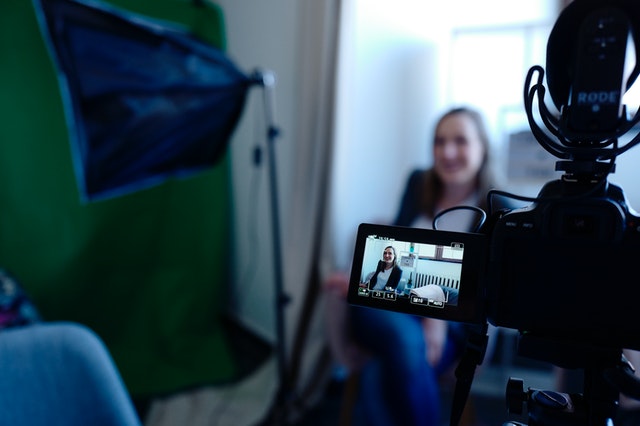Five Elements of a Great Production

When it comes to creating a video, there are many questions to consider before going out to film. We’ve broken down the elements of production into five main categories. Understanding how these elements operate individually and as a unit will help ensure a solid video that meets your company’s needs.
1. Concepting
Every memorable video starts with an excellent concept. In order to create an evergreen, well-performing video, you must keep the end result at the forefront of concept creation. Have a distribution plan before you make the video. It doesn’t have to be complicated or fully developed; it just needs to be conceived with the following things in mind:
- Identify the goals of the video. What is going to make the video successful to your company?
- Identify your desired audiences. Understanding these audiences will help you tailor the story to them specifically and encourage greater results from your video.
- Understand which style will best suit the needs, goals, and expectations for the video. Is it commercial, testimonial, documentary or promotional? Knowing which style to use for your video will help refine your story into something intentional.
2. Pre-Production
Once you and your agency have nailed down the concept, you’ll rely on your agency to execute your vision. Pre-production is the most essential element of a great production. What you do not plan for in pre-production affects production, and what you do not do in production affects post-production. Although you cannot predict every potential scenario, creative thinking before the shoot day will help you solve problems on the day of. A strong understanding between client and agency is best seen in the pre-production process. Below are a couple of things that a good producer will do to help bring the client’s vision to life:
- Logistics:
- Break down the script and storyboard. What locations will sell the story the best? Do we need to build a set?
- What props will we need to establish a realistic set?
- Does the video need to show a passage of time? Can we do that with hair/makeup and wardrobe changes?
- Cast and Crew:
- Hire the perfect players to tell your story in the most authentic way. Producers will often work with your company to acquire talent that best suits the story and the audience you’re reaching.
- Which team members will add to the dynamic you’re hoping to achieve on set?
- Knowing how each team member reacts in different situations will help you build a great crew for the job at hand.
- Scheduling:
- Will your production crew need more time to set up a large scene?
- Are there really emotional scenes? If so, you’ll want to give your actor(s) time to create the emotions you’re going for.
- If you need to cut scenes, which ones can be cut without compromising the story or continuity?
3. Production
Up to this point, the producer and the client have worked together to refine the goals of the video. On set, it’s up to the director and producer to inform the cast and crew of how to best achieve those goals. A collaborative client and crew relationship will create an environment where creativity can thrive. Below are some tips for the best set experience:
- Communicate clearly at all times. When something isn’t clear, ask for clarity.
- Refer to the creative briefs, storyboards, or the client themselves for clarification during uncertainty. It’s better to take the time to adjust something in the moment than to completely reshoot a scene.
- Sets can be, and often are, high stress, high stakes environments. Keeping a calm demeanor and level head when making production decisions can be the difference between the schedule being 10 minutes behind or three hours behind.
4 . Post-Production
Clear expectations and feedback are essential during post-production (editing). Revisions can be as simple as a music change; other times it’s more time-consuming like changing the pacing, shot selection or color. If the producer has done their due diligence before this point, you’ll rarely need a reshoot to address concerns of the client regarding story, setting or sound. Here are a few tips for the post-production process:
- Communicate deadlines clearly and in a timely manner. Deadline expectations should be realistic to the scope of the project.
- If a deadline needs to be adjusted, it should be communicated clearly before the deadline actually hits.
5 . Distribution
You should already have a distribution plan before you get to this step. Remember the conversation about goals and expectations during concepting? Now you just need to identify this:
- Does the video meet all the needs of your distribution plan?
- Necessary specs such as up to 0:60 for Instagram, 0:15, 0:30 or 0:60 for television, etc.
You should execute the distribution with a very distinct strategy behind it. If the producer and client have accurately identified and maintained their ideal goals, expectations and desires throughout the process, then the distribution should be fairly straightforward.
Understanding and executing the five essential elements of a great production will help you create the perfect video to meet your company’s needs.
Leave A Reply